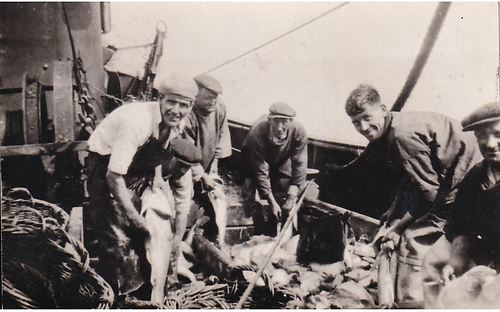 Hartlepool Sports & Leisure
Hartlepool Sports & Leisure
- Cinemas, Theatres & Dance Halls
- Musicians & Bands
- At the Seaside
- Parks & Gardens
- Caravans & Camping
- Sport
 Hartlepool Transport
Hartlepool Transport
- Airfields & Aircraft
- Railways
- Buses & Commercial Vehicles
- Cars & Motorbikes
- The Ferry
- Horse drawn vehicles
 A Potted History Of Hartlepool
A Potted History Of Hartlepool
- Unidentified images
- Sources of information
- Archaeology & Ancient History
- Local Government
- Printed Notices & Papers
- Aerial Photographs
- Events, Visitors & VIPs
 Hartlepool Trade & Industry
Hartlepool Trade & Industry
- Trade Fairs
- Local businesses
- Iron & Steel
- Shops & Shopping
- Fishing industry
- Farming & Rural Landscape
- Pubs, Clubs & Hotels
 Hartlepool Health & Education
Hartlepool Health & Education
- Schools & Colleges
- Hospitals & Workhouses
- Public Health & Utilities
- Ambulance Service
- Police Services
- Fire Services
 Hartlepool People
Hartlepool People
 Hartlepool Places
Hartlepool Places
 Hartlepool at War
Hartlepool at War
 Hartlepool Ships & Shipping
Hartlepool Ships & Shipping

Ben Tarbert Crew
What we know about this image :
Photograph of the crew of the Ben Tarbert Trawler c1930s. Alexander Stewart is on the far right.
Donor : Andrew Stewart
Location
Related items :
 Alexander Stewart 1940's
Alexander Stewart 1940's
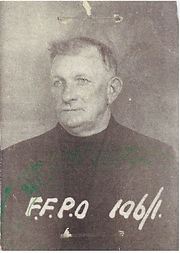 Donated by Andrew Stewart
Donated by Andrew StewartDated 1940
Photograph of Alexander Stewart who set up home in Hartlepool in 1923, afer leaving Scotland.
The hand written number suggests this is a wartime ID photo from the 1940's.
More detail » Ben Tarbert Crew
Ben Tarbert Crew
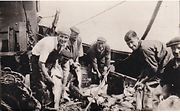 Donated by Andrew Stewart
Donated by Andrew StewartPhotograph of the crew of the Ben Tarbert Trawler c1930s. Alexander Stewart is on the far right.
More detail » Ben Tarbert Crew 2
Ben Tarbert Crew 2
 Donated by Andrew Stewart
Donated by Andrew StewartThis photograph is of the Ben Tarbert Crew. Alexander Stewart is on the far right. His son William aged fourteen is also on the photograph.
More detail » Grannie Stewart
Grannie Stewart
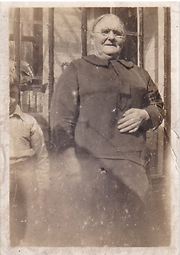 Donated by Andrew Stewart
Donated by Andrew StewartThis photograph is of Jane Stewart, known to all of her family as "GRANNIE". She lived in the Croft till 1929 befoe ot was demolished, she then moved to Everard Street.
She was known locally as "the big Scotch woman". She could speak little, "normal" English but used a very brioard Scots dialect known as Doric. She earned her living by carrying fish around the town .
More detail » Grannie Stewart & Jessie Coultas
Grannie Stewart & Jessie Coultas
 Donated by Andrew Stewart
Donated by Andrew StewartThis photograph is of Mrs Jane Stewart known locally as"Grannie Stewart" with her daughter Mrs. Jessie Coultas. Wife of the skipper of the Ben Tarbet.
More detail » Mock Trouble
Mock Trouble
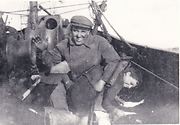 Donated by Andrew Stewart
Donated by Andrew StewartThe photgraph shows a William Stewart, aged fourteen in mock trouble aboard the Ben Tarbert, possibly with the Skipper his uncle Jack Coultas.
More detail » William Stewart 1935
William Stewart 1935
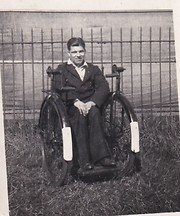 Donated by Andrew Stewart
Donated by Andrew StewartDated 1935
This photograph is of William Stewart aged 19 when the photo was taken.Seated in a hand-propelled wheechair which he used from 1934 to 1967.
Memoirs of Andrew Stewart, son of William Stewart.
"My father, William Stewart, lived in Hartlepool from 1923 until 1964. He belonged to a fishing family from north-east Scotland, where my grandfather, Alexander Stewart, worked on the herring drifters, as did many other family members. My grandmother died in the 1918 flu epidemic, and for 5 years my father and his older brother John lived with different family members and in foster homes in Scotland.
By 1923, my grandfather’s sister Jessie had married Jack Coultas, and was living in Hartlepool. Jack was skipper of a trawler, HL 21 Ben Tarbert and he offered to take my grandfather onto the crew where he became “Third Hand” or bosun. So in 1923 my grandfather set up home in Hartlepool and arranged for his mother Jane Stewart, known in the family as “Grannie” to look after my father, then aged 7, and his brother aged 11, while their father was at sea – as he was from every Sunday night until the following Saturday night. After a period in lodgings, they lived in the Croft till 1929 before it was demolished, then moved to Everard Street. Grannie, known in the area as “the big Scotch woman”, could speak little “normal” English but used a very broad Scots dialect known as Doric, as did my grandfather and the two boys at home, and earned a living by carrying fish round the town and local villages in a creel on her back, to sell or barter.
After leaving school, John joined the Ben Tarbert as apprentice deckhand. In 1930 “Grannie” died, and my father – now 14 but looking a lot younger – spent the summer at sea on the Ben Tarbert with his father and brother as a “crew passenger”. This was common in those days, giving boys from fishing families a chance to find out whether they wished to become fishermen themselves. But my father contracted polio in 1931 at the age of 15, spent 14 months in hospital, and was never able to walk again. After leaving hospital he acted as housekeeper for his brother (who left to get married later in the 1930s) and father, until he started work at Remploy in 1950 by which time his own father had retired. In 1938 my father and grandfather moved to King Street – now the “Town Wall” end of Northgate – then in 1950 to Sharp Crescent in West View, where my grandfather died in 1953.
In 1934 my father acquired a hand-propelled pushchair which enabled him to get around independently. During the 1950s, he was allocated some of the first Ministry of Transport cars for disabled people (unattractively known as “invalid carriages”). Several of the photos of my father are of interest as much for his chairs and cars as for my father himself!
Also in 1934, my father joined the Hartlepool Corps of The Salvation Army, in Lumley Street, later called Hartlepool Citadel; distinct from West Hartlepool Corps, later called Hartlepool Temple. He joined the SA choir, known as the Songster Brigade; during WW2 when the younger men of the Corps were away in the forces, he learnt to play a brass instrument and joined the Band; from 1945 to 1950 or just after he was a member of a SA musical “Quartette” which presented programmes of Christian brass and vocal music throughout the North-East; and from 1950 onwards he helped set up and run a SA Sunday School for children in West View.
My parents married in November 1959, I was born in Cameron Hospital in December 1960, and we moved to London in 1964 so my mother could help care for her mother who had suffered a stroke."
More detail » William Stewart in his first Car
William Stewart in his first Car
 Donated by Andrew Stewart
Donated by Andrew StewartThis photograph is of William Stewart in the mid -1950s at a Sunday School outing in his first government- issue disabled person's car.
More detail » William Stewart in his second car
William Stewart in his second car
 Donated by Andrew Stewart
Donated by Andrew StewartIn this photograph William Stewart can be seen in his second government issue car. He drove this from Hartlepool to NE Scotland and back on holiday at least twice .
More detail »




